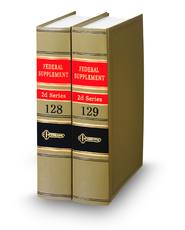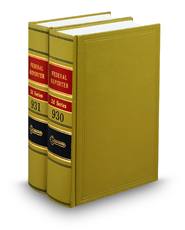

Preamble: We the People of the United States, in Order to form a more perfect Union, establish Justice, insure domestic Tranquility, provide for the common defence, promote the general Welfare, and secure the Blessings of Liberty to ourselves and our Posterity, do ordain and establish this Constitution for the United States of America.
The Constitution of the United States is the Supreme Law of the Land. In its Preamble, it expresses where the authority of the federal government is derived from: the people. Despite all the nation's statutes, cases, regulations, and even the words of the Constitution itself, it is the will of the people that is the founding force and remains superior.
Following the Preamble, the Constitution sets out the structure of government.
|
Article I: All legislative Powers herein
|
Article II: The executive Power shall
|
Article III: The judicial Power of the United |
Amendment X:
The powers not delegated to the United States by the Constitution, nor prohibited by it to the States,
are reserved to the States respectively, or to the people.

Article I. Section 1. All legislative Powers herein granted shall be vested in a Congress of the United States, which shall consist of a Senate and House of Representatives.
While the Constitution creates the foundation and framework of the legal system, the laws enacted by Congress specify its means and mechanisms. These laws provide the details that set standards for the country's activities in areas such as criminal law, commercial law, public health, and, of course, taxation.
A law created by a legislative body is called a statute. During a legislative term, Congress will pass many statutes. The various statutes passed are collected and added to already existing statutes arranged systematically in a compilation called a code. Federal statutes are codified in the United States Code.
In order for a bill to become law, it must pass both houses of Congress. An in-depth treatment of legislative procedure.
Separate from Congress, each state has its own legislative body that enacts statutes that operate concurrently with federal statutes. The basic structure of every state legislative body is similar to the federal model, although the names of the houses may vary.

Article II. Section 1. (1) The executive Power shall be vested in a President of the United States of America.
The purpose of the executive branch is to enforce the laws. In doing so, the executive branch often makes additional laws to implement congressional mandates. This is primarily accomplished through the use of administrative agencies. Because of their extensive use, the secretaries of the government's major agencies (or departments) are members of the President's cabinet.
The laws created by administrative agencies are called rules or regulations. For federal agencies, these are codified in the Code of Federal Regulations. Although administrative agencies are placed under the executive branch in this document, there are agencies created under all three branches of government. In fact, most federal agencies were created by Congress and given authority to act through a process called delegation. The Administrative Procedure Act (as well as other specific statutes) specifies the steps an agency must comply with in enacting regulations.
The Executive Branch, specifically the President, also plays an important role within the government's system of checks and balances. The President may veto any bill passed by Congress. Upon veto, the bill is returned to Congress and only becomes a law if Congress overrides the veto. To do this, each house of Congress must pass the bill by a two-thirds majority.
Each state also has an executive branch led by its governor and administrative regulations.

Article III. Section 1. The judicial Power of the United States, shall be vested in one supreme Court, and in such inferior Courts as the Congress may from time to time ordain and establish.
The primary purpose of the judicial branch is to resolve disputes. In doing so, the courts further elaborate on the details contained in legislative enactments. There are also certain areas of law whose principles have been almost entirely set by the courts through the common law.
Structure of the Federal Judicial System
The federal court system has three main levels: Supreme Court, intermediate appellate court, and trial court. The number of courts at each level roughly corresponds to the number of cases the court or courts decide. Seen together, they form a pyramid.

In addition to the above listed courts, there are many specialized courts in the federal judicial system. For simplicity's sake, they were omitted from the above diagram. The federal courts website has a more comprehensive overview of the federal court system.
Beginning (like legal actions themselves) with the lowest court:
United States District Court is the trial court in the federal judicial system. One of the primary functions of the trial court is to determine the facts in the case. This can be done using either a judge or jury as the factfinder. The factfinder in the District Court receives evidence such as exhibits and testimony from witnesses. From the evidence, the factfinder determines the facts and applies the law to those findings, resulting in a verdict. A small percentage of District Court decisions are published in Federal Supplement (now in its Second Series).
The United States Court of Appeals is the intermediate appellate court in the federal judicial system. The United States Court of Appeals is organized into 12 regions called circuits (and therefore, these courts are sometimes referred to as circuit courts of appeals). With one exception, the circuits are referred to by number (1-11). The single exception is the D.C. Circuit. In addition to the regional circuits, a Federal Circuit (that sits in the District of Columbia) has nationwide jurisdiction to hear appeals in specialized cases such as those involving patents. In all, then, there are thirteen federal courts of appeal. There are maps of the circuits to help identify which states are located in each circuit.
The Court of Appeals reviews decisions of the District Court for errors of law. The Court of Appeals does not receive testimony from witnesses. Instead, the Court of Appeals receives briefs that present arguments on issues of law. At oral argument, the court listens to and questions attorneys on the issues. Many of the decisions of the United States Court of Appeals are published in Federal Reporter (now in its Third Series). Decisions of a particular circuit court are binding authority on the courts located within that circuit. They are merely persuasive authority with respect to courts outside of the circuit.
The Supreme Court of the United States is the court of final resort in the United States. It hears appeals from not only federal courts, but from state courts as well. Its decisions are binding authority for all courts in the land. There are nine Supreme Court Justices, one is designated the Chief Justice. The court begins each term on the first Monday in October and sits until the end of June.
Judicial Precedent and Stare Decisis
Appellate court decisions in the United States are particularly important because of the doctrine of stare decisis. This doctrine holds that the law stated in prior decisions of a court is binding on that court and lower courts within the jurisdiction unless fundamental principles of justice demand otherwise. These prior decisions are called precedents. These precedents, along with applicable statutes are binding authority in judicial proceedings ("sources of law that must be taken into account by a judge in deciding a case." Black's Law Dictionary). Binding authority can be contrasted with persuasive authority which a court may consider but is not compelled to adhere to. Examples of persuasive authority include: court decisions from other jurisdictions, scholarly treatises or law review articles, and restatements.
In addition to their case decisions, courts also create law by enacting court rules. Court rules encompass many areas: the Rules of Civil Procedure set forth the time, place and manner of conducting a civil lawsuit, the Rules of Evidence define standards for the admissibility of evidence, and the Rules of Professional Conduct govern the actions of members of the bar.
Apart from the federal court system, each state also has its own court system. The names of these courts often vary from state to state. Minimally, there is a court of general jurisdiction (a trial court) and a court of last resort. Many states have an intermediate court of appeal (between the trial court and the court of last resort). There may also be courts of limited jurisdiction and/or specialized courts. See the Washington State Court System graphic.
 West's federal supplement, 2d series
by
West Group
West's federal supplement, 2d series
by
West Group
 West's Federal Reporter
West's Federal Reporter
Seattle University Law Library
901 12th Avenue | Seattle, WA 98122 | 206-398-4220
Law Library | Research Guides | About Us